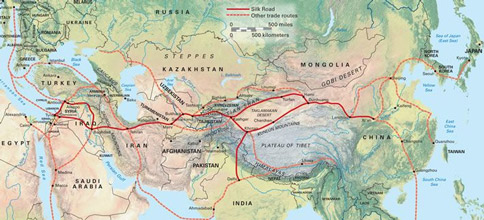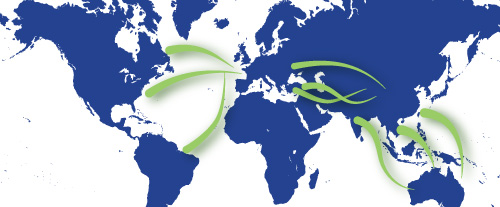
Key definitions
Old Definition of the Silk Road
The Silk Road is an ancient network of trade routes linking Asia, the Middle East and Europe. Some 6,000 miles of tracks stretch across Central Asia and the Middle East, connecting China with the Mediterranean. Its name is derived from the silk exported by Chinese traders who used the routes from the second century BC, but the caravan tracks were also traversed by merchants of a broad range of goods - textiles, jewels, metals, spices and medicines to name but a few.
The flow of people along the Silk Road facilitated the exchange not just of goods, but of ideas - technological, philosophical and cultural. The peoples of Eurasia shared their artistic techniques, medical knowledge and religious beliefs.
Trade on the Silk Road brought prosperity to the region and played a major role in the advance of the great civilisations of China, India, Egypt, Persia, Arabia and Rome.
Modern Definition - The "New Silk Road"
The term "New Silk Road" has been used by various authors for different purposes over many decades. The "New Silk Road" has become an umbrella term to describe the increasingly important trade and economic links between the developed and developing economies stretching from South East Asia to the Middle East, Central Asia and Europe. Some commentators extend this all the way from the Asia Pacific (Australia) to the Americas.
The NSR Forum has been established to build upon the legacy of the Silk Road. It aims to promote a better understanding of the growth of and potential for enterprise with these fast-growing nations and to highlight how the increasing trade links between the countries on the Silk Road can create new business opportunities beneficial to all parties.
Contact the Secretariat
T:020 7859 1578
Email me